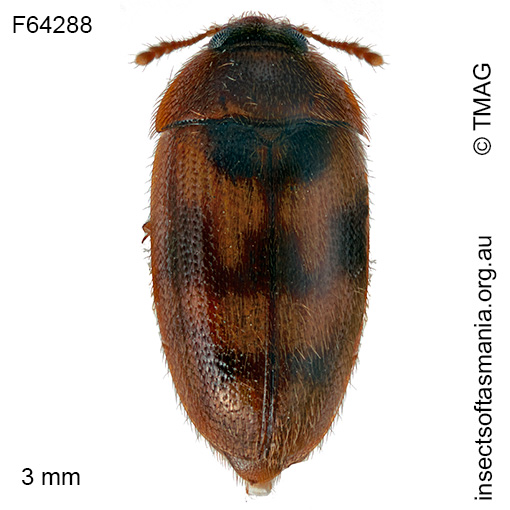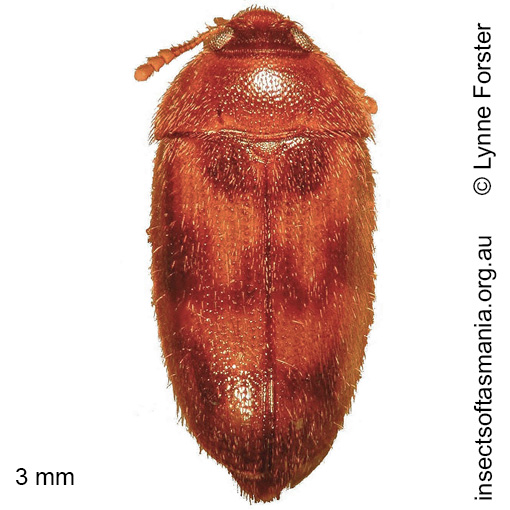
Litargops intricatus (a species of hairy fungus-beetle)
Basis for Tasmanian occurrence
Semmens, T.D., McQuillan, P.B. & Hayhurst, G. (1992). Catalogue of the Insects of Tasmania. Government of Tasmania: Department of Primary Industry, 104 pp. (as Litargus intricatus)
TMAG collections
Classification
Order: Coleoptera
Suborder: Polyphaga
Superfamily: Tenebrionoidea
Family: Mycetophagidae
Subfamily: Mycetophaginae
Tribe: Mycetophagini
Morphology
Typical length (mm): 3
Flightedness: winged and assumed capable of flight
Ecology
Assumed larval feeding: predator
Association with dead wood or old trees: at least facultatively saproxylic
Collection method(s) for TMAG material: — Baited trapping (funnel trap) — Emergence trapping from cut billets of Eucalyptus obliqua (Harrison, 2007) — Flight intercept trapping (trough below Malaise trap) — Hand collection (substrate not specified) — Knockdown fogging of canopy of Eucalyptus obliqua — Malaise trapping — Sticky trapping on Eucalyptus obliqua — Trapping using a range of devices placed in crown of Eucalyptus obliqua (Bar-Ness, 2005).
Source ecological literature:
Grove, S.J. (2009b). Beetles and fuelwood harvesting: a retrospective study from Tasmania’s southern forests. Tasforests 18: 77-99.
Bar-Ness, Y. (2005). Crown structure and the canopy arthropod biodiversity of 100 year old and old-growth Tasmanian Eucalyptus obliqua. Msc thesis, Univ. of Tasmania, Hobart.
Harrison, K.S. (2007). Saproxylic beetles associated with habitat features in Eucalyptus obliqua trees in the southern forests of Tasmania. PhD thesis, Dept. of Zoology, Univ. of Tasmania, Hobart.


